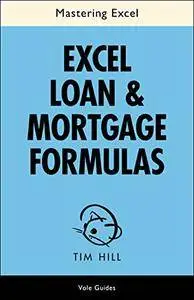Mastering Excel Loan & Mortgage Formulas (No Fluff Guide) by Tim Hill
English | 18 Oct. 2013 | ISBN: 1937842274 | 66 Pages | MOBI | 595.61 KB
English | 18 Oct. 2013 | ISBN: 1937842274 | 66 Pages | MOBI | 595.61 KB
Updated for Excel 2016. Calculations with loans, mortgages, leases, credit-card debt, car payments, medical expenses, and retirement funds are the most common financial operations in Excel. Author Tim Hill shows you how to use worksheet functions, data tables, and other Excel features to manage your business and personal finances. If you're using an older version of Excel that doesn't support the latest worksheet functions, you'll find equivalent formulas that work in Excel 2003 or earlier. You can download the sample workbook to follow along with the author's examples.
Covers all versions of Excel.
Learn about basic financial concepts, including cash flows, timing issues, and the time value of money.
Determine how much to invest now to meet a future goal.
Calculate how money will accumulate in your retirement or savings accounts.
Figure out the payments needed to pay off a loan or to meet an investment target.
Derive the true interest rate of your investments or loans, including "interest-free" loans.
See how much time it will take to pay off a loan, meet an investment target, or retire.
Separate the interest and principal portions of your mortgage or loan payments for tax purposes.
Convert between the commonly used methods of quoting interest rates.
Create amortization schedules to see how your debts change over time.
Build summary tables to compare loans that have different interest rates, loan amounts, or payment terms.
Plenty of tips, tricks, and timesavers.
Fully indexed and cross-referenced.
Contents
1. Getting Started with Loans & Mortgages
2. Present Value (PV)
3. Future Value (FV)
4. Payments (PMT)
5. Interest Rates (RATE)
6. Periods (NPER)
7. Interest and Principal Components
8. Converting Interest Rates
9. Loan Amortization Schedules
10. Summarizing Loan Options
About the Author
Tim Hill is a data scientist living in Boulder, Colorado. He holds degrees in mathematics and statistics from Stanford University and the University of Colorado. When he's not crunching numbers, Tim climbs rocks, hikes canyons, and avoids malls.



